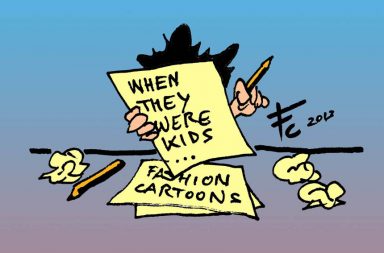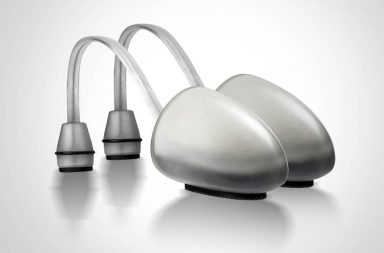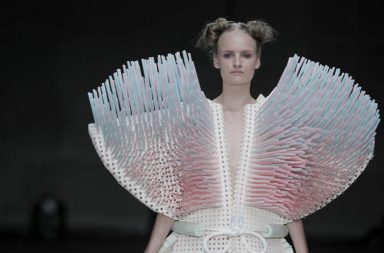The work of Jo Cope is at once unsettling and beautiful. Using fashion as her medium, she brings artistic and emotional content to all of her pieces.

For Jo Cope, fashion can, and should be more than wearing clothes. Her fashion artefacts are born from a desire to bring durability to the world of fashion, to turn it into conceptual art worthy of being shown in galleries, as three dimensional art therapy.

We talked to Jo Cope recently and enjoyed every one of her reflections on the fluid relationship between fashion and art, or rather, between art and fashion.
SO CATCHY!: How would you describe your work? You say that you work at the intersection of the fine art, fashion and craft. Do you think fashion world is ready to understand your work?
JO COPE: I suppose I am always trying to push the fashion boundaries as far as I can whilst still making it connected and relevant, I am trying to project a future fashion scenario that still captures social trend and engages with fashion making methods but that has another life. I have often had the desire to be more abstract, but it is important for me that the fashion audience is not completely disconnected. To also answer the question in reverse, it is more important for me is to find out is if the art world is ready to embrace my fashion related work as art, as that is my primary objective.

SC!: Why did you focus on fashion artefacts?
JC: My perception of an artefact in relation to fashion describes the desire to give fashion longevity as an object evolved through craft, its execution and with intellectual thinking creating a deeper value. My objective on the masters was to learn specific craft skills so that I could create more ambitious fashion related works that were beautiful, bespoke and were fully functional yet void of the need for formal logical at the same time. A fashion artefact is also somewhat ambiguous in nature and in this there is free rein in its interpretation, this sense of freedom within fashion is very important to me.

SC!: Could you describe your creative process?
JC: I have never had a fixed methodology; the creative process has always been driven by the object I see in my mind’s eye. The mental image initiates the development of ideas around fabrics, materials and making methods. My own body creates the site to develop and connect with the work. In the past much of my prototyping has been about building structures in paper and card on mannequins to extend the body’s form, while using my own body to act out related actions and embody the project more intimately.
More recently working around the feet I have started with old wooden lasts extending their parameters using woodworking and sculpting materials.



CS!: Let´s talk about The Language of Feet in the Walk of Life . Tell us the meaning of your work, materials, manufacturing process…. Why did you choose shoes?
JP: My family history says that shoes are imbedded in my DNA; it took me a while to realise just how much I connect with shoes particularly the sculptural nature of the making process. For a past project I made a human scale body block in which I was crossing over the 3D lasting process of footwear in order to have a more physical making experience with the body, I was also commissioned to make conceptual shoes in the past by the Boot and Shoe Museum in Northampton, but at this point approached it unconventionally as I was without traditional skills, which wasn’t a bad thing at that time.
I wanted to invest time in thinking about the shoe and the foot; the part of the body that leaks so much interesting body language but also the place that gives us such beautiful locomotion and connects us to the earth. In many situations I have read others feet to understand something about them in that moment but also to understand myself in relation to them.
Shoes are such a practical objects, with parameters of scale for obvious reasons; I wanted to defy their usual function to create new ones.
I consider myself to be rebellious and enjoyed ignoring their sole purpose, this often triggered many debates in the studio about their definition as shoes.
The meanings in the work exist between the ambiguous and suggestive. All of the works were materialised from real life experience and it is up to the viewer to decide how literal to take both the titles and the objects. The work relates to love and relationships and talks about our connection with others but ultimately our navigation of life and understanding of the self as an individual being. There is a suggestion of life struggles in which the objects act as a form of self-therapy; you might call them material exorcisms.
Materials and making are somewhere between the past and the present; new technology was used to scan aspects of the body and at the same time body parts were physically cast with plaster bandages. In the ‘twisted shoes’ new shoe lasts had to be manufactured, manipulated from old in CAD. There are aspects of 3D printing and milling but the predominant challenge was to create extreme footwear forms whist retaining the fits, traditional materials, techniques and processes. The shoes were a labour of love and created constant challenges and adaptation. One of the many challenges was how to get the long wooden lasts out to leave the leather shoe forms hollow as this is usually done right at the end when working at normal scale. Blood and sweat was an essential ingredient, as was working with highly talented footwear technicians that had up to 30 years experience. We problem solved together and it was a joy to be immersed in the cordwainers department and learn so many skills that I can further progress and divert in different ways.

SC!: Where do you think the future of fashion is heading?
JC: Sustainability and ethics is a key area; just working recently with Masters students across textiles, knit and fashion, many of them as future designers, are looking at a bigger cause to fight for or a plight to expose or highlight particularly in relation to human rights. The ethical use of materials and educating consumers is becoming a priority. Fashion is also pushing further and further into the arts with a renewed sense of freedom and disregard for unnecessary creative boundaries; there is a lot still to be explored in its relationship to high and low tech, virtual realities, narrative, psychological experience, fashions relationship to body and space within performance and beyond. A number of people are looking at fashion beyond the physical objects; the work of Adam Peacock, current artist in residence at LCF, is very interesting and I was invited to be part of one of his workshops which brought together designers and geneticists. Fashion is also being viewed as an educational tool which can empower and inform people’s lives as a more three dimensional art therapy; this is one of my areas of interest.
SC!: Do you plan to create wearable pieces anytime soon?
JC: When I meet with designer and creative director of the YKK showroom London Kei Kagami yesterday, he asked me the same question. I guess the simple answer would be no, I am committed now to a career as an artist who works with fashion and the body. I would like to collaborate with a concept store to create a limited run of wearable descendant shoes; this might be something I come back to. Time is so precious in the studio and I want to focus now on the thing that matters most to me and if other opportunities arise I will consider them, but I don’t want to spread myself too thinly.

SC!: Your Next Step is…
JC: Working on touring the work internationally this year at Fashion Clash in the Netherlands, with the Virtual Shoe Museum in Budapest and Detroit, starting to think about a performance piece for Sadler’s Wells theatre in November and meeting with people to plan exhibitions and projects in 2018/19 including an installation at YKK showroom London
SC!: Your main inspiration is….
JC: Life experiences and daily significant moments and its bigger picture and point and the ongoing relationship and understanding of myself and others
SC!: Your dream is….
JC: To be represented by a commercial gallery, exhibit in significant places and make a meaningful contribution at the intersection of fashion and art.

SC!: Instagram accounts or website you like.
JC: Contemporary art galleries and museum on Instagram are wonderful because you can’t get to every exhibition in every country:
@offsite.concept.space I got chatting to through the power Instagram, so it is great when it becomes a tool to meet interesting people who you might work with.
@virtualshoemuseum is a wonderful advocate for conceptual shoes.
SC!: Your favourite artist is / are….
JC: I don’t have a favourite artist but there is so much conceptual and contemporary art that I love, The most important thing for me is that the conceptual and abstract has the ability to stimulate new thought patterns and make my mind do the work.
Sometimes it’s the physical artwork itself that interests me and sometimes it’s the artist as a person.
Elenor Antin, Marina Abramovic, Cosey Fanni Tutti, Tracy Emin, Anthony Caro, Anish Kapour, Ai Wei Wei, Gutai group movement and conceptual art movement 60-70’s Steven Willats, Sol Lewitt. Oscar Schlemmer and Charles Bukowski are a few most obvious from the top of my head.
SC!: You cannot live without…
JC: Myself
All images courtesy of Jo Cope
Translation and Layout by Michael Padilla




